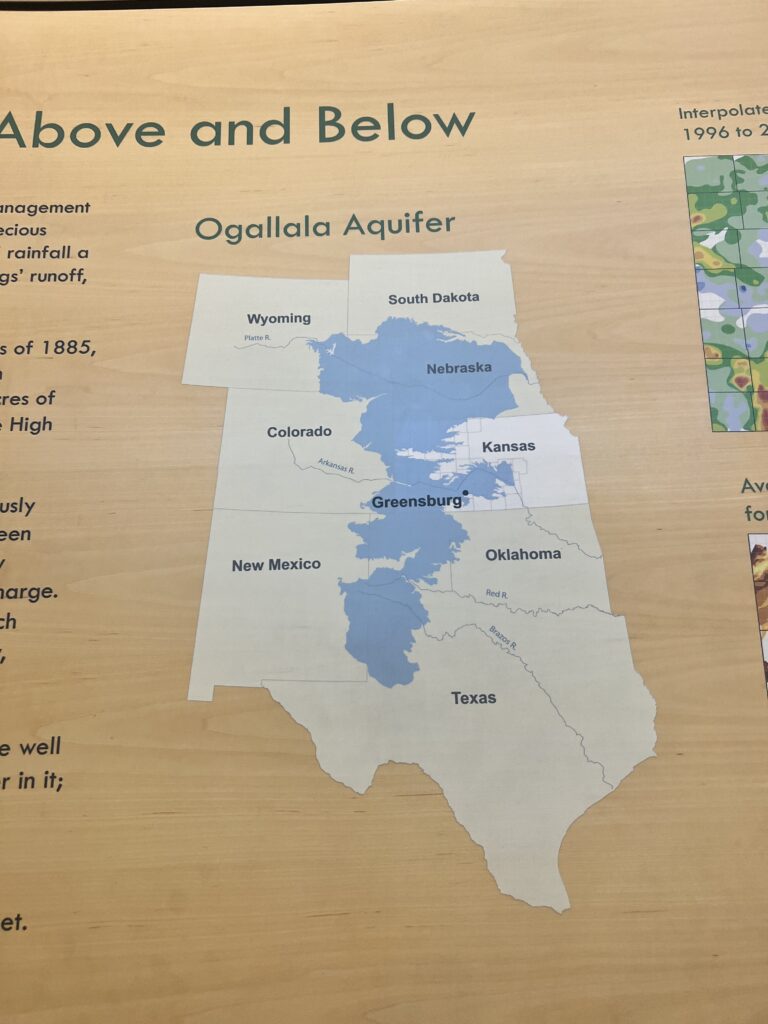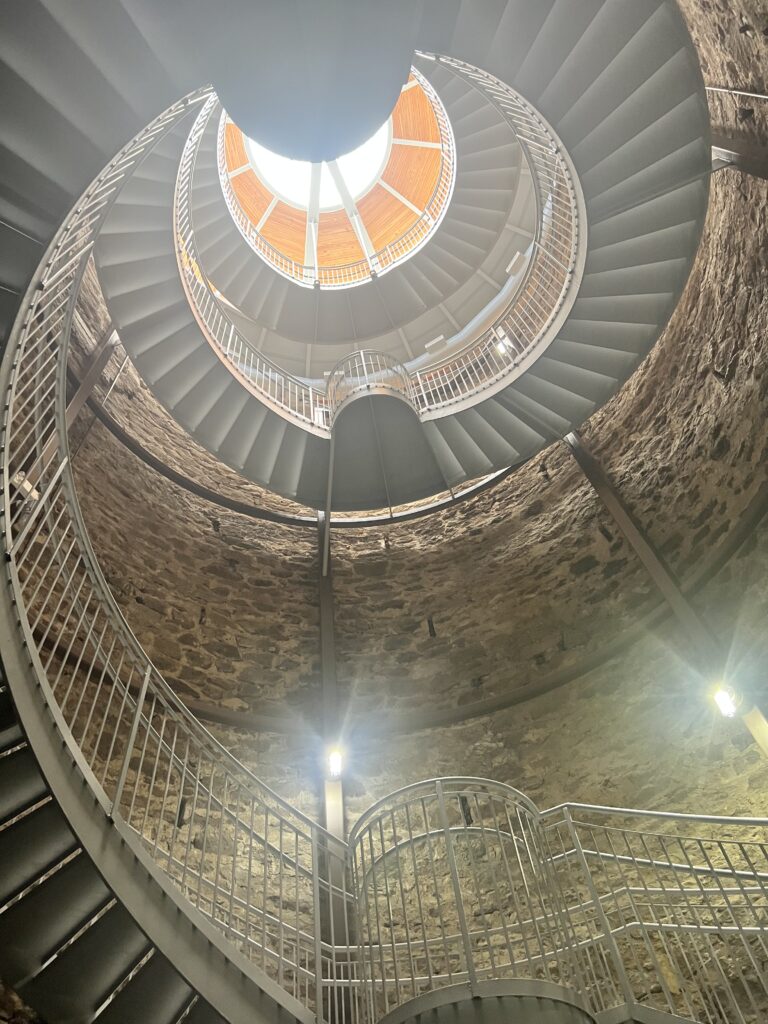I spent the last few days in Kansas, and couldn’t leave without making a stop in Greensburg. Located roughly 100 miles west of Wichita, the town enjoyed 15 minutes of fame when it was mentioned in the 2009 State of the Union address, highlighted for its use of clean energy. While interesting, that wasn’t what led me to Greensburg. I was there to see the “Big Well”.
The “Big Well”, as it’s affectionally known, is the world’s largest hand dug well. Constructed in 1887, the well is 109 feet deep, and taps into one of America’s great natural resources. The Ogallala Aquifer. The Ogallala sits beneath the Great Plains, extending into 8 states, and holds over 3 billion acre-feet of water. That’s enough to submerge the entire United States under a foot and a half of water. For comparison, Lake Mead only holds about 30 million acre-feet of water, 1% of what’s in the Ogallala.

The Big Well has been turned into a local tourist attraction, featuring a museum above ground, and a spiral staircase that takes you to the bottom of the well. The museum was actually really interesting, and walking to the bottom of the well was kind of cool, but that alone isn’t really worth writing about. But when combined with a broader discussion of water infrastructure, the “Big Well” is a helpful example.
Do you know where your water comes from? The people of Greensburg, Kansas knew exactly where their water came from, they could walk into the middle of town and see the well. For most people today the question is a bit more complicated, and many never ask the question. If you live in the Southwest, odds are your water is shipped to your home from hundreds or thousands of miles away, carried via massive infrastructure projects. If you live in the Midwest there’s a good chance your water comes right out of the Ogallala Aquifer. If you live near the Great Lakes you can probably guess where your water comes from. The point is that depending on where you live, the source of your water can vary dramatically. And we typically don’t ever think about it, as long as water comes out when we turn the faucet, it doesn’t really matter. Like a lot of issues, it doesn’t matter, until it does.

Well in a lot of places it’s starting to matter. The fight over the Colorado River is typically the most prominent water issue in the news, but it’s far from the only one. Texas and New Mexico are battling it out over allocation of the Rio Grande River. Nebraska and Colorado are fighting over the South Platte River and the details of a 99 year old water compact between the 2 states (this one could actually get interesting). Florida and Georgia took a water battle all the way to the Supreme Court. And if California had nuclear weapons, they might consider targeting St. George, Utah, in order to stop a proposed water pipeline. Another battle that’s sure to get interesting.
Odds are more and more state’s will get dragged into the water wars over the next few years. If you don’t already know the source of your water, a quick Google search will probably reveal the answer. You might even be surprised by the answer, there are plenty of cities in the U.S. with water sources you wouldn’t expect. A quick search may lead you to some interesting answers. Maybe not as cool as the “Big Well” but interesting nonetheless.

Apparently the “Big Well” is one of the Eight Wonders of Kansas. Yes, there really is such a list. What are they, you ask?
1. The Big Well (Greensburg)
2. Cheyenne Bottoms/Quivira National Wildlife Refuge (Barton and Stafford Counties)
3. Cosmosphere (Hutchinson)
4. Dwight D. Eisenhower Presidential Library and Museum (Abilene)
5. Kansas Underground Salt Museum (Hutchinson)
6. Monument Rocks and Castle Rock (Gove County)
7. St. Fidelis Catholic Church, aka Cathedral of the Plains (Victoria)
8. Tallgrass Prairie National Preserves & the Flint Hills (Chase County)
Kansas wonder #4 is getting a blog post next. Eisenhower Presidential Museum should be #1 on the list.
I believe they’re listed alphabetically, not by rank.
Ah, didn’t notice that.
The Ball of Twine (40 foot circumference, 17,400 lbs) in Cawker City was a finalist. LOL.
Glad you found a stop to explore your love exploring water trails. 😂 You are definitely very well informed on this subject. Who knew such a thing could be found in Kansas? 🤷♀️
Finally… I can comment! I’ve been catching up on my Trip Across America reading but the comments section have been closed (until now). Your writing is terrific, Zach. Very informative. I love reading historical narratives and you’re providing me with some great education – unless you’re just making it all up – haha!
One comment on a previous post… Chase Field. I’ve noted in previous posts that I’m not a fan of indoor ballparks and that, of course, reaches to Chase Field for most of the year. I’ve been there open and closed. Not a fan of the setting in either format. I’d rank Chase Field in the lower half of stadiums of been to, maybe just below the median. One thing that knocks it down a few notches is their organist. That guy never stops playing and his stuff is constantly corny. Get rid of him and Chase moves up a few notches in my book.
Thanks Brad. I’ll have to look into the problem with posting comments, didn’t realize that was happening.